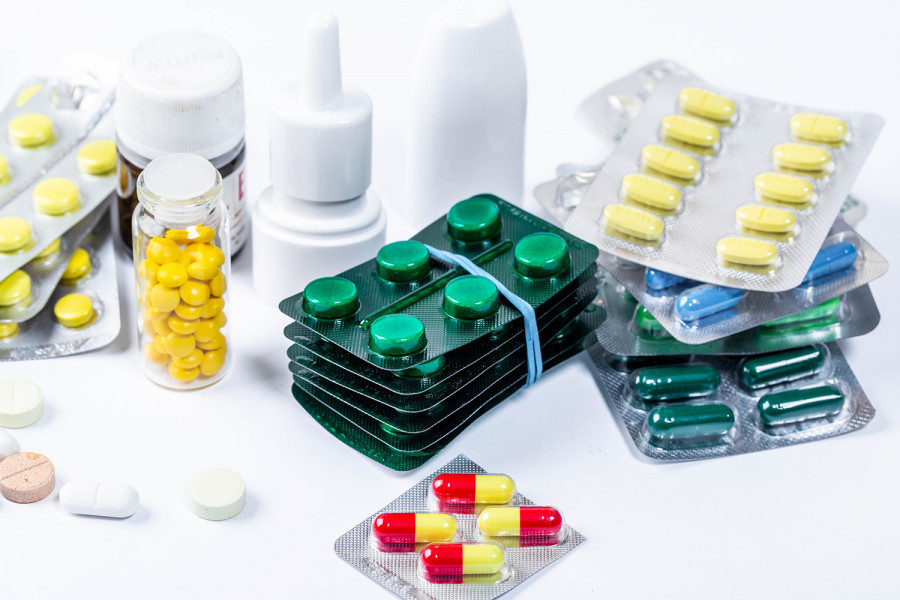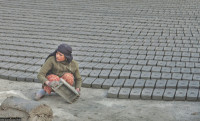Columns
Man and microbe
As no new drug molecules are in the pipeline, treating deadly microbes becomes a game of thrones.
Naseem Salahuddin
The human body consists of trillions of individually living cells that breathe, fight, attack, die, rejuvenate and replenish. The human cell is a world in itself, with a nucleus housing a DNA coil stretching out to construct protein-building enzymes, which are the building blocks of all organs. Each organ has a defined role and is responsible for its survival. The human body is a marvel of engineering and must be respected.
As an analogy, the microscopic bacterium is a single cell that, too, is a world in itself. Although it has no nucleus, it has its factory of particles whose primary function is to replicate by breaking itself into two, two into four, four into 16, and exponentially into millions—all within minutes. They inhabit our entire gut, from the mouth to the end of the five metres of convoluted intestine. The bugs live their own lives, not harming the host. But, if annoyed by unwholesome ingredients or unwanted competitors, they may revolt.
The battle between humans and microbes is an example of the arms race inherent in biological systems. If vandals threaten a household, the reaction will be to strengthen the walls and lock all entrances. If the intruders have guns, citizens will procure weapons. It is the hour of survival of the fittest.
The bacterium has comparable prowess. If the common bacterium called Staphylococcus aureus penetrates the skin, it may cause boils, abscesses, or septicemia, and must be destroyed with antibiotics. In the 1940s, penicillin containing a chemical ring of beta-lactam eliminated the Staph. With prolonged use and under pressure, the Staph started to produce an enzyme called beta-lactamase that destroyed penicillin. Scientists strengthened penicillin by adding a radical, but the resilient Staph counteracted with protein PBP2a that resisted the robust antibiotic called methicillin. The battle between Staph and methicillin continues, but Staph is coming ahead.
The same saga upends combat between antibiotics and the typhoid-causing Salmonella, the powerful E. coli, and its close cousins Pseudomonas and Enterobacter, that thrive in wet areas in hospitals and produce enzymes that destroy antibiotics. These tenacious bugs stick to equipment or the hands of doctors and nurses and are transmitted to sick patients, who get sicker with infection in the blood or internal organs. A few years back, infectious disease physicians could destroy bad bugs with conventional antibiotics and restore the patient’s health. Today, we play Russian roulette: If the lab reports resistant bacteria, new generations of antibiotics costing Rs5,000-20,000 a day for two to four weeks in a hospital may or may not save the patient’s life. No new drug molecules are in the pipeline in the world of pharmaceuticals. Treating deadly microbes is a game of thrones.
Other devious microbes that defy lifesaving drugs, like tuberculosis bacteria and fungi, invade an already weakened body and elude treatment with older drugs. Newer drugs are enormously expensive and toxic, and the humble sufferer has little choice between living and dying. As population and poverty increase in direct proportion, multidrug-resistant TB is spreading more fiercely than ever to the marginalised population who can hardly afford nutritious meals and drugs at a monthly Rs20,000 for nine months or longer, in addition to frequent expensive tests.
Sadly, the trend of irrational antibiotics use by doctors originates in medical colleges, where the professor teaches in overcrowded classrooms, wards and clinics, leaving no room for arriving at logical diagnoses, and doctors are left to be brainwashed by pharmaceutical reps who promote their products, offering incentives that influence prescribing habits. Diagnostic laboratories either do not exist or are inept; roadside stores sell medicines randomly. Self-treatment, driven by the desire for quick solutions and without proper medical guidance, is another significant factor. Consequently, drug resistance is rising rapidly and poses a serious public health threat.
Addressing antimicrobial resistance requires a multifaceted approach. Antimicrobial stewardship programs in hospitals and clinics are crucial in guiding the appropriate use of antibiotics. By avoiding antibiotics against viral infections and limiting their use to treat only disease-causing bacteria, we may prolong their effectiveness for many decades.
Antimicrobal resistance is not just an individual, local, or national issue. It is a serious global threat. We can only hope to manage and mitigate its impact through concerted action at all levels—ndividual, institutional and international. As part of this global community, each of us is responsible for stanching the tide of further resistance by exercising caution in using antibiotics.
—Dawn (Pakistan)/ANN




 9.12°C Kathmandu
9.12°C Kathmandu















